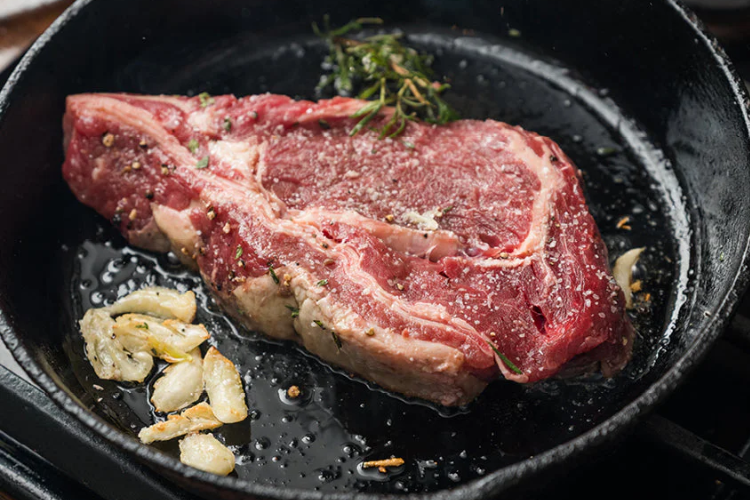There’s a reason ribeye steak is often called the "king of steaks." Known for its rich flavor, tender texture, and marbling, this cut is a favorite among steak enthusiasts. Whether you're grilling, pan-searing, or broiling, a ribeye steak offers a mouthwatering experience that’s hard to beat. But to truly master the art of cooking this steak, it's important to understand its characteristics, the best ways to prepare it, and the perfect cooking methods to bring out its full potential.
What is Ribeye Steak?
Ribeye steak comes from the rib section of a cow, specifically from the area between the sixth and twelfth ribs. It is known for its high fat content and significant marbling, which is the streaks of fat throughout the meat. This marbling is what makes ribeye so flavorful and juicy. The fat melts during cooking, infusing the meat with rich flavors and ensuring a tender bite.
Ribeye can come in two main varieties: bone-in and boneless. While the bone-in version tends to have more flavor due to the bone's contribution to the overall taste, both cuts offer a similar texture and tenderness when cooked correctly.
Choosing the Perfect Ribeye Steak
When selecting a ribeye, there are a few factors to consider to ensure you're getting the best quality:
- Marbling: Look for steaks with visible marbling throughout the meat. More marbling generally means a juicier and more flavorful steak.
- Thickness: Opt for steaks that are at least 1 to 1.5 inches thick. Thicker steaks allow for a better sear on the outside while maintaining a juicy interior.
- Grade: The USDA grades steaks based on their quality. Prime ribeye steaks are the highest quality, followed by Choice and Select. If you're looking for a steak that’s tender and full of flavor, opt for Prime or Choice.
Preparation Tips
- Seasoning: Ribeye steaks have enough natural flavor that they don’t require heavy seasoning. A simple combination of salt and pepper works wonders. For an extra boost, you can rub the steak with garlic, rosemary, or a bit of olive oil before cooking.
- Room Temperature: Always bring your steak to room temperature before cooking. This ensures even cooking and prevents the steak from becoming tough.
- Resting: After cooking, let the steak rest for 5-10 minutes. This allows the juices to redistribute, ensuring a moist and tender steak.
Cooking Methods
There are a variety of ways to cook a ribeye steak, and each method offers a different experience. Here are some popular techniques:
- Grilling: Grilling ribeye is a classic method that imparts a smoky flavor. Preheat your grill to medium-high heat and cook the steak for 4-6 minutes per side, depending on thickness and desired doneness.
- Pan-Searing: For a perfect crust, pan-searing is an excellent choice. Heat a cast-iron skillet over medium-high heat and add a small amount of oil. Sear each side for 3-5 minutes, then finish by basting with butter and herbs for extra flavor.
- Reverse Searing: This method involves cooking the steak at a low temperature in the oven (around 275°F) before searing it in a hot pan. This ensures even cooking and a perfect crust.
Doneness Levels
Ribeye steaks are best enjoyed medium-rare to medium, where the meat remains juicy but still cooked through. Here’s a quick guide to doneness:
- Rare: 120-125°F (cool red center)
- Medium-Rare: 130-135°F (warm red center)
- Medium: 140-145°F (pink center)
- Medium-Well: 150-155°F (slightly pink center)
- Well Done: 160°F and above (brown center)
Use a meat thermometer to check the internal temperature to ensure the steak is cooked to your liking.
Pairing Ribeye Steak
Ribeye’s rich flavor pairs well with a variety of sides and beverages. Consider serving it with roasted vegetables, mashed potatoes, or a fresh salad. For drinks, a bold red wine like Cabernet Sauvignon or a cold craft beer complements the steak’s intensity.
Conclusion
A perfectly cooked ribeye steak is the epitome of indulgence. With the right preparation, cooking technique, and attention to detail, you can enjoy a tender, juicy steak that’s bursting with flavor. Whether you're a seasoned chef or a beginner in the kitchen, mastering the art of cooking ribeye will elevate your steak game to the next level.





Comments